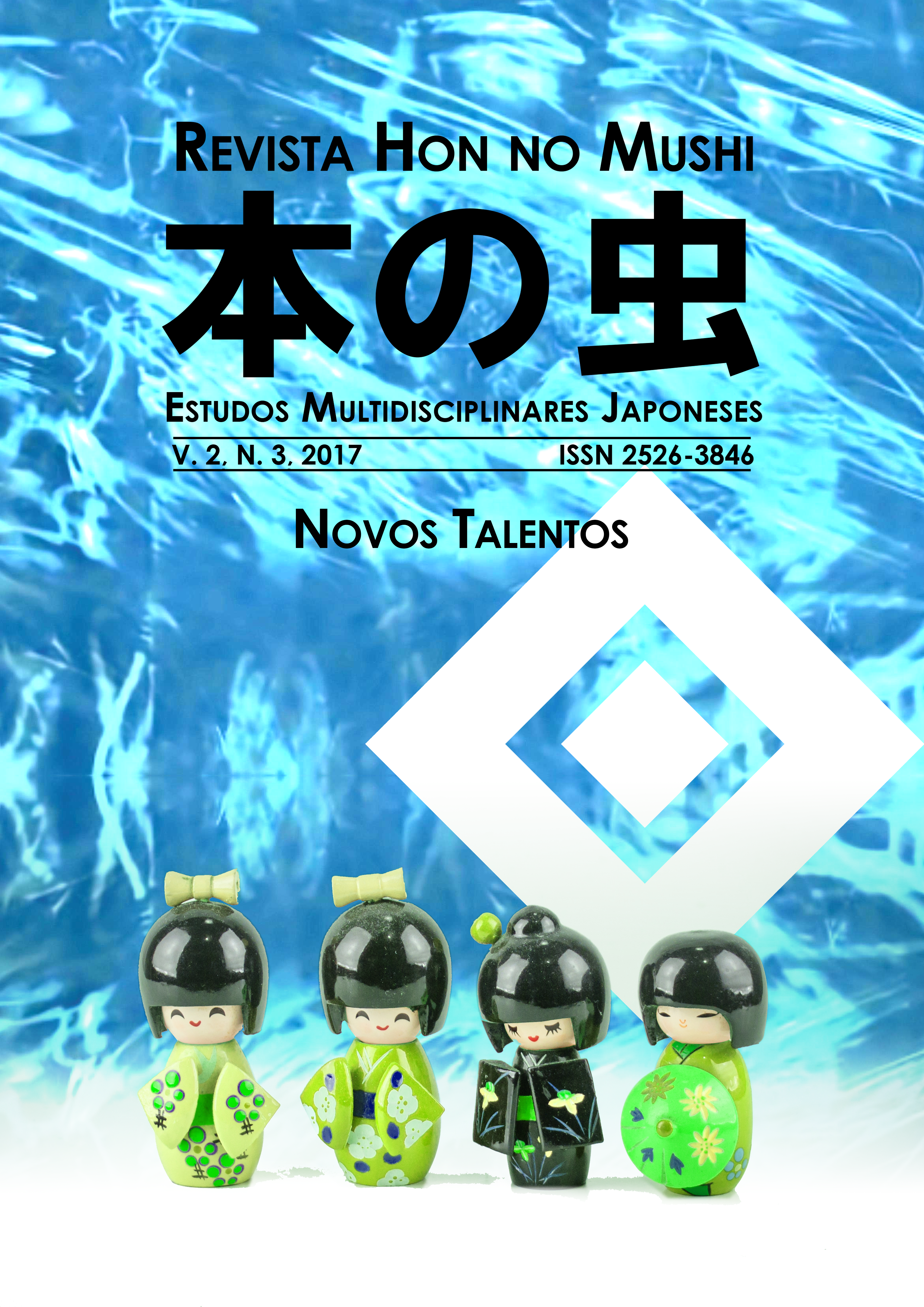UKIYO-E HEROES: A LINK WITH THE PAST
Keywords:
Keywords: Ukiyo-e Heroes; ukiyo-e; Japanese pop culture; mitate; yatsushi.Abstract
Reflecting about Japanese pop culture and ukiyo-e, the “floating world pictures” art, this work presents and analyses the Ukiyo-e Heroes serie woodblock prints, from the northamerican illustrator Jed Henry. It succinctly shows the pop culture promotion in Japan and its propagation worldwide; besides it discourses about the historical period that enabled the ukiyo-e art creation and development. Analysis by this art’s characteristics, styles and technics and the aplicattion of mitate and yatsushi concepts (forms of expression highly used in pre-modern Japanese period) enables to categorize those new woodblock prints as ukiyo-e works and to understand how a traditional Japanese art has ceded its traits to contemporary Japanese pop culture, making capable to turn videogame characters in art.
Downloads
References
BROWNLEE, John. How Video Games Revived The Dying Art Of Japanese Woodprinting. 2013. Disponível em: <www.fastcodesign.com/1673187/how-video-games-revived-the-dying-art-of-japanese-woodprinting >. Acesso em: 23 jun. 2017.
CORDARO, Madalena Natsuko Hashimoto. “浮世 Ukiyo: poética de um mundo flutuante”. Revista Humanidades, Brasília, n.54, p.71–78, nov. 2007.
DESKTOPMAG. Enduring traditions: Ukiyo-e and Video Games. Disponível em: <desktopmag.com.au/project-wall/enduring-traditions-ukiyo-e-and-video-games/#.Whc1D1WnHIV>. Acesso em: 17 jun. 2017.
FAVA, Rubens. Bushidô: o caminho do guerreiro. 2011. Disponível em: <www.administradores.com.br/artigos/cotidiano/bushido-o-caminho-do-guerreiro/56705/>. Acesso em: 23 jun. 2017.
FURIHATA, Toshio. O fascínio da cultura japonesa: Um olhar brasileiro sobre a cultura japonesa. São Paulo: Ipsis. 2008
HASHIMOTO, Madalena. Pintura e escrita do mundo flutuante: Hishikawa Moronobu e ukiyo-e Ihara Saikaku e uikiyo-zôshi. São Paulo: Hedra, 2002.
HINOHARA, Kenji. An Introduction to Ukiyo-e, in English and Japanese. Tóquio: Tokyo Bijutsu. 2015.
KATSURAYAMA, Maria Aparecida Cordeiro; BARRETO, Sônia Régis. A Influência da Arte Japonesa na Representação da Espacialidade Impressionista. 2010. Disponível em: <www4.pucsp.br/iniciacaocientifica/20encontro/downloads/artigos/MARIA_APARECIDA_CORDEIRO_KATSURAYAMA.pdf >. Acesso em: 23 jun. 2017.
KOKUBUNGAKU KENKYÛ SHIRYÔKAN (org). Zusetsu mitate to yatsushi: Nihon bunka no hyôgen gihô. Tóquio: Yagi shoten, 2008.
KOYAMA-RICHARD, Brigitte. Modern-day Artisans Carry On the “Ukiyo-e” Tradition. 2014. Disponível em: <www.nippon.com/en/views/b02306>. Acesso em: 23 jun. 2017.
KUMON-UKIYOE. How an ukiyo-e is created. Disponível em: <www.kumon-ukiyoe.jp/en/flow.php>. Acesso em: 17 jun. 2017.
LUYTEN, Sonia M. Bibe. Mangá e anime: Ícones da Cultura Pop Japonesa. 2014. Disponível em: <fjsp.org.br/artigo/manga_anime_sonia_luyten>. Acesso em: 17 jun. 2017.
NIPPON. Tóquio: Heibonsha, n.2, 15 set. 2009. 27 p. Special Feature: Ukiyoe – Pop Art of Old Edo.
SAKURAI, Célia. Os Japoneses. 1.ed. São Paulo: Contexto, 2008.
SATO, Cristiane A. Introdução à cultura pop japonesa. Disponível em: <www.culturajaponesa.com.br/?page_id=102>. Acesso em: 23 jun. 2017.
SHINDO, Shigeru. “Mitate to yatsushi no teigi”. In: Zusetsu mitate to yatsushi: Nihon bunka no hyôgen gihô. Kokubungaku kenkyû shiryôkan (org). Tóquio: Yagi shoten, 2008. p.111-120.
SUZUKI, Teiiti. “Origem e desenvolvimento da xilogravura ukiyo-e”. In: Estudos Japoneses Nº 8 , São Paulo, 1988.
TSUTSUI, William M. Japanese Popular Culture and Globalization. Ann Arbor, MI: Association for Asian Studies, 2010.
UKIYOEHEROES. Meet the Artists. Disponível em: <ukiyoeheroes.com/about-us.php>. Acesso em: 17 jun. 2017.
YAMASHIRO, José. História da Cultura Japonesa. São Paulo: IBRASA, 1986.
Downloads
Published
Issue
Section
License
The copyright belongs to the Hon Journal in Mishi - Multidisciplinary Japanese Studies and to the authors of each article. All work or part of it, when quoted or used, must be referenced.




